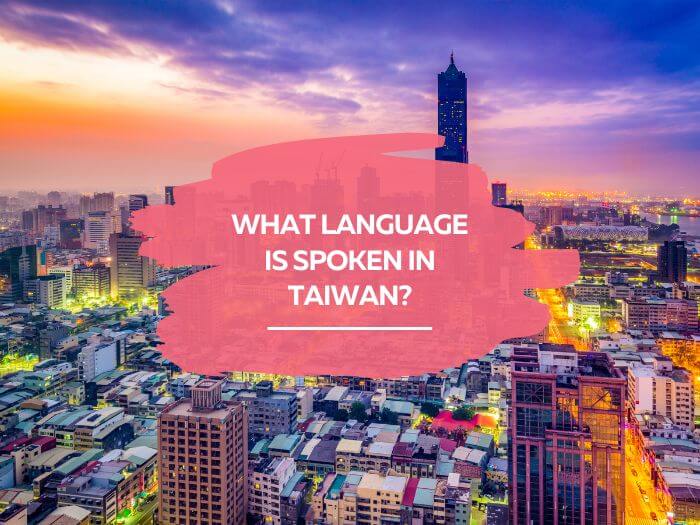If you're learning Chinese you're probably aware that people in Taiwan speak some kind of Chinese. And you may also know that Mandarin is one of the main types.
However, it’s a bit more complicated than just this, so to help you understand the situation in a bit more detail, in this post, I answer the question: what language is spoken in Taiwan?
Pro Tip
By the way, if you want to learn Chinese fast and have fun, my top recommendation is Chinese Uncovered which teaches you through StoryLearning®.
With Chinese Uncovered you’ll use my unique StoryLearning® method to learn Chinese through story…not rules. It’s as fun as it is effective. If you’re ready to get started, click here for a 7-day FREE trial.
Table of Contents
What Language Is Spoken In Taiwan? The Short Answer

Before we look at Taiwan’s linguistic development and the languages that are spoken on the island in more depth, let me give a short answer to the question – what language is spoken in Taiwan?
Although a variety of languages are spoken in Taiwan, by far the two most prevalent are Taiwanese Mandarin and Taiwanese Hokkien.
These two languages are both descended from an ancient language known as Old Chinese, but they began to diverge from around the 7th century CE.
Now they are completely mutually unintelligible – much more so than something like French and Italian, for example.
Hokkein
Hokkien is a Southern Min language that originated in Fujian province just across the Taiwan Strait, and it was brought to Taiwan by the first Chinese settlers to the island between the 17th and 19th centuries.
Taiwanese Mandarin
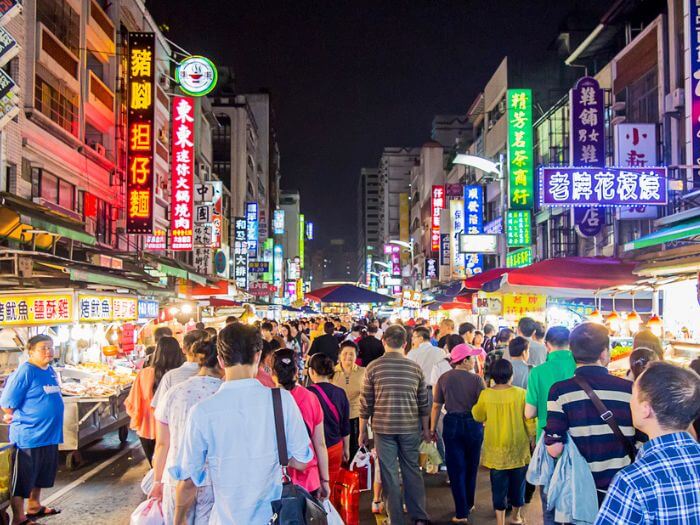
Taiwanese Mandarin is a version of the Beijing dialect of Mandarin Chinese. This is the dialect that forms the basis of Standard Chinese, the language that everyone in Mainland China learns at school.
During the Qing dynasty, it solidified its position as the national language on the mainland and was brought to Taiwan after the Second World War when Taiwan was handed back to China after around 50 years of Japanese rule.
Hakka
A third Chinese language, Hakka – also mutually unintelligible with either Mandarin or Hokkien – is also spoken on the island.
And several indigenous languages belonging to the Austronesian language family are also spoken by dwindling pockets of aboriginal Taiwanese.
So that’s the short answer to – what language is spoken in Taiwan? And now, if you want to know more about how this situation came about, let’s jump right in and look at the details.
A Little History Of Taiwan
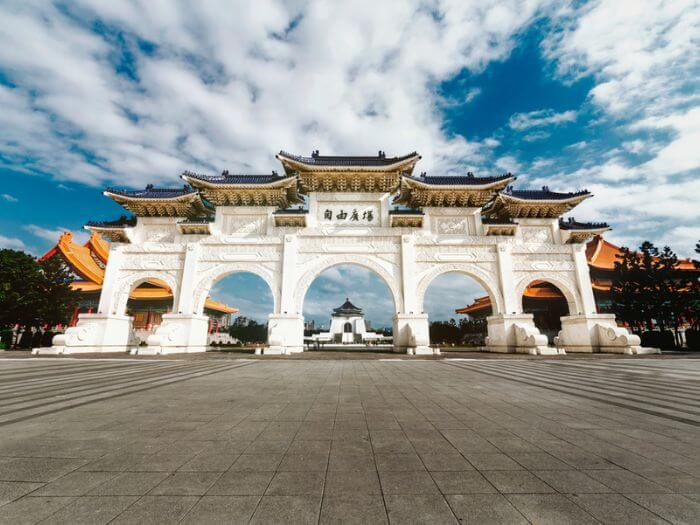
If you want to understand the languages of Taiwan, you need to start by looking at its history – because Taiwan’s history and the development of the linguistic landscape there are inextricably linked.
Although China’s history dates back millennia, for most of that time, the island of Taiwan lay outside the orbit of Chinese influence.
The island has been inhabited for at least 25,000 years since palaeolithic times, but the ancestors of those now considered to be the aboriginal Taiwanese arrived there around 6,000 years ago.
These people probably came from southeastern China but were unrelated to the people who would go on to become the Han Chinese.
They also spoke languages that were completely unconnected to the incipient Chinese language that was beginning to develop further north. See my post on Chinese language history for more on the origins of Chinese.
The Arrival Of The Europeans

There are records of Han fishermen visiting the Penghu islands off the coast of the main island of Taiwan from at least the 12th century CE.
And the following centuries saw sporadic skirmishes with the locals as well as some Chinese attempts to settle these islands.
However, few Chinese visited the hostile Taiwanese mainland until the 16th century.
In the early 17th century, the Dutch East India Company established a presence in the southern portion of Taiwan.
When they arrived, they found around 1,500 Chinese already living there, but by encouraging immigration from the mainland, they saw the numbers swell.
By the latter half of the century, there were probably around 30-50,000 Chinese farmers, mostly from Fujian province, working on Dutch-controlled lands.
At the same time, the Spanish had been attempting to establish a colony in the north of the island, but their efforts lasted less than 15 years before they were defeated by the Dutch in 1642.

Qing Annexation
While this was going on, over on the mainland, the Qing were busy overthrowing the Ming. The Ming finally fell in 1644, and in 1661, the Qing expelled the Dutch from Taiwan.
The Qing then formally annexed the island in 1664, and although the Dutch tried to hold on, they finally abandoned Taiwan in 1668.
The ensuing years were to be a key period in the linguistic development of Taiwan
Initially, migration to the island from China was restricted, but these restrictions were gradually relaxed and then lifted entirely in 1875.
By the time Taiwan was granted full provincial status in 1887, over two million Han settlers, mostly Hokkien speakers from Fujian, were living there.
The Han also took control of many aboriginal villages, some of which adopted Chinese ways while others didn’t.
The Japanese Period & Return To The Republic Of China
The next important period in the linguistic history of Taiwan began in 1894 when Japan took control of the island.
The Japanese forcibly imposed their language on the island’s inhabitants, and many settlers arrived from Japan. Over 300,000 Japanese were living in Taiwan by the outbreak of the Second World War.
By this point, the island’s population had reached around six million, consisting mostly of Fujianese immigrants.

Following the Japanese defeat at the end of the Second World War, the nationalist government of the Republic of China (ROC) – the Kuomintang – took control of Taiwan in 1945.
Subsequently, after losing the Chinese Civil War to the Communists, the Kuomintang, under Chiang Kai-shek, fled to Taiwan and established a new capital in Taipei in 1949.
They were joined by a further two million refugees from all parts of the mainland, mostly soldiers, Kuomintang and business elites fleeing Communist rule.
These immigrants became known as 外省人 wàishĕngrén (outside province people) – and they were also to play an important role in the linguistic development of Taiwan.
Martial Law To The Present
Following the establishment of the Kuomintang government in Taiwan in 1949, martial law was declared and was only lifted in 1987, something else that had significant implications for the languages of Taiwan, as we will see in just a moment.
Since then, Taiwan has been governed as an independent state, although the People’s Republic of China (PRC) – in other words, Mainland China – still regards Taiwan as a renegade province that must be reintegrated, by force if necessary.
Taiwan is now a modern, developed country comparable to places like Japan or South Korea. It has a flourishing democracy and also ranks among the top countries in Asia in terms of things like freedom, healthcare and quality of life.
Its colourful history has also left a legacy of an intricate and fascinating patchwork of languages, so let’s delve into this now.
What Language Is Spoken In Taiwan? The Languages Of Taiwan
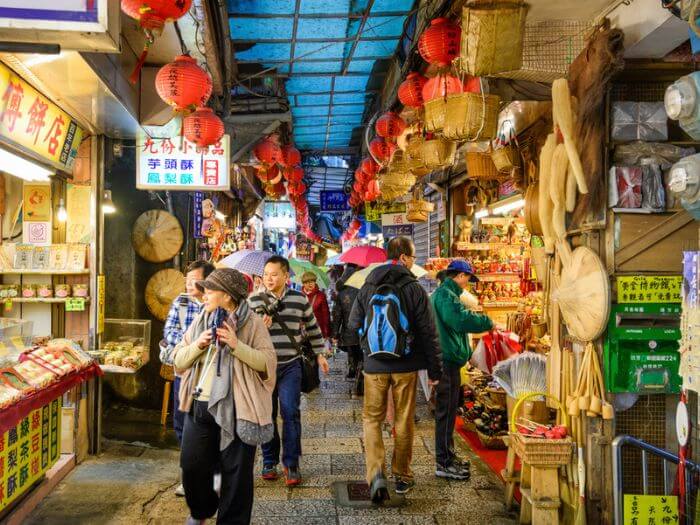
Taiwanese Hokkien
Although the Taiwanese version of Mandarin is the lingua franca of Taiwan, Taiwanese Hokkien is historically the most common native tongue on the island.
It is spoken by the descendants of the Hoklo people, immigrants who arrived in Taiwan from Fujian province between the 17th and 19th centuries and who now comprise around 70% of the population.
Taiwanese Hokkien, sometimes known simply as “Taiwanese”, is a dialect of Hokkien, a Southern Min language that originated in southeastern Fujian, just across the Taiwan Strait.
The Origins of Hokkien
Hokkien, like Mandarin, can be traced back to Old Chinese, an ancient language that appeared at least 3,000 years ago during the Shang dynasty in a region centred on modern-day Henan province in the North China Plain.
However, Hokkien and Mandarin started to diverge when Old Chinese began to evolve into Middle Chinese during the Sui (618-907 CE), Tang (618-907 CE) and Song (907-1279 CE) dynasties, and now the two languages are completely mutually unintelligible.
Hokkien Today
Modern Taiwanese Hokkien is a blend of two formerly competing Hokkien dialects, Quanzhou and Zhangzhou Hokkien – although there remain small pockets of people in Taiwan who still speak these original dialects.
Today, Taiwanese Hokkien is in relatively good shape, having undergone a revival since the beginning of the “Mother Tongue Revival Movement” that started in the 1990s and is the only language that is holding its own in the face of the encroachment of Taiwanese Mandarin.
That said, among the younger generation, many ethnic Hoklo now speak better Mandarin and count Mandarin as their primary language. So the long-term future of Taiwanese Hokkien is still far from secure.
Taiwanese Mandarin
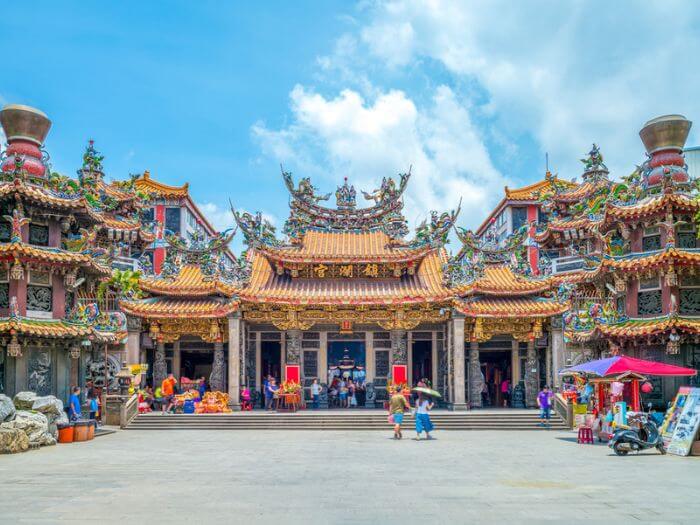
Although most of the original Chinese settlers who arrived in Taiwan came from Fujian province, later, when the Kuomintang took control of Taiwan in 1945, Mandarin became the de facto official language of the island.
Long before then, the Beijing dialect of Mandarin had become the lingua franca of Mainland China. And it was quickly adopted in Taiwan too – even though it hadn’t been widely used in Taiwan other than for official communication before the mid-20th century.
Following the defeat of the Kuomintang by the Communists in the Chinese Civil War, a great exodus of speakers of many other Chinese languages arrived in Taiwan. And with the influx of these waishengren, Mandarin solidified its status as the common tongue.
Martial Law
This was then cemented with the declaration of martial law in 1949 when Mandarin was imposed on the population while other languages were suppressed.
Mandarin became the only permitted language of instruction in schools. Children were even punished for speaking languages other than Mandarin, and this period had a serious negative impact on the island’s other languages.
Following the lifting of martial law in 1987, people were again allowed to speak their native languages, and school instruction in languages other than Mandarin was permitted and even promoted.
Taiwanese Mandarin Today
However, Taiwanese Mandarin has retained its status as the island’s main language, despite the high proportion of native Hokkien speakers. And the majority of Taiwanese consider it their primary language, even if it isn’t their native or ancestral one.
Mandarin holds particular sway in the major urban areas, especially Taipei, due to the high proportion of people living there who moved to Taiwan in the years following the upheavals of the Chinese Civil War.
Taiwanese Hakka
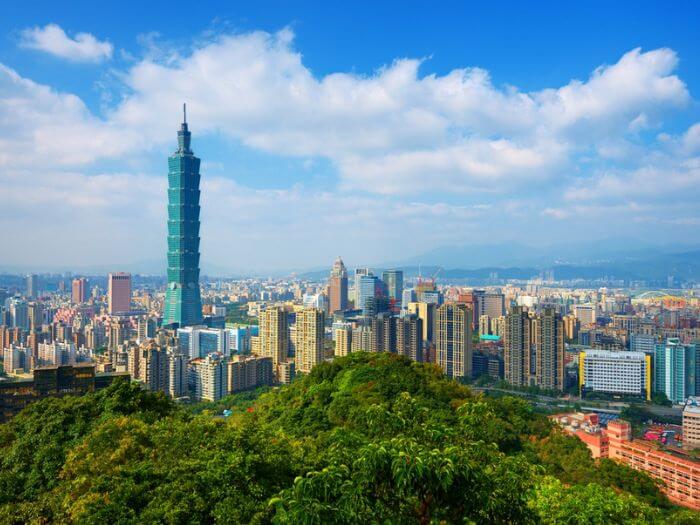
The Hakka people are descended from migrants from the central plains of China who moved south after other Chinese populations were already established there and had developed their own customs and languages.
The Hakka language is not mutually intelligible with either Mandarin or Hokkien, and all three split from their common ancestor at around the same time. Its closest relative is Gan Chinese, which is mostly spoken in modern Jiangsu province.
Since many Hakka speakers were living in Fujian and the neighbouring provinces when the original Chinese settlement of Taiwan began, Hakka speakers were also drawn to the island along with the Hoklo settlers.
Some of their descendants in Taiwan still speak Hakka today, with the majority of the speakers being found in Taoyuan, Hsinchu and Miaoli.
Hakka is recognised as an official language of Taiwan, and five main dialects exist.
However, the language is threatened by the inexorable advance of Mandarin, with many younger speakers being more proficient in Mandarin than in their so-called native language.
Only around 6-7% of the Taiwanese population speak Hakka at home.
Matsu And Wuqiu Dialects
The Matsu dialect, a version of an Eastern Min language from Fujian, is spoken in the Matsu islands. The Wuqiu dialect, a version of another Min language, is spoken in the Wuchiu islands.
Cantonese
Pockets of Cantonese speakers can be found in Taiwan. They are mostly waishengren and their descendants who arrived in 1945 and after, following the return of Taiwan to the ROC and the subsequent defeat to the Communists.
Aboriginal Formosan Languages
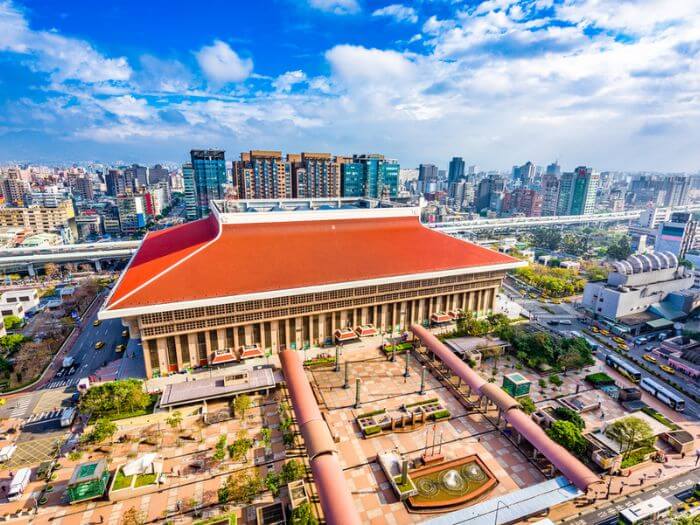
Before the arrival of the Chinese, Taiwan had been populated by aboriginal peoples who spoke a variety of languages belonging to the Austronesian language family.
These are now known as “Formosan languages” after Formosa, the old name for the main island of Taiwan.
The Homeland Of Austronesian Languages
According to the most widely accepted theory, Taiwan is the original homeland of the entire Austronesian language family.
This means the roots of languages including Malay-Indonesian and Philippine languages like Tagalog along with Hawaiian, Samoan and Māori among many others may all be traceable back to the island of Taiwan.
However, nowadays, like Hakka, these languages are being pushed out by the prevalence of Mandarin. And many younger speakers are more comfortable in Mandarin than in their ancestral languages – and many can’t speak aboriginal languages at all.
The Amis Language
The Amis language is the best represented, with around 10,000 native speakers, mainly found along the east coast of Taiwan.
However, the island’s total population of ethnic Amis is around 200,000. And of these few young people speak the language, demonstrating the perilous state of even Taiwan’s most widely spoken aboriginal language.
In total, the Taiwanese government recognises 16 official aboriginal languages, with several others existing that are not recognised.
However, many are in serious danger of extinction as Mandarin continues to grow in popularity, especially among the young.
Overall, around 2% of the population of Taiwan is of aboriginal descent. But far fewer than this are able to speak their ancestral tongues.
English
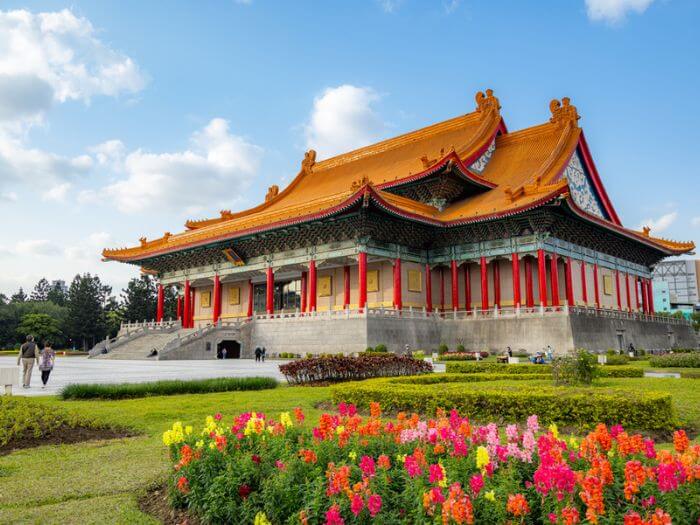
If you plan to visit Taiwan, Mandarin is the language to know. But if you don’t speak Mandarin, English will still get you a long way – much further than it would in Mainland China.
Nowadays, most young Taiwanese study English at school, and plenty of them learn it to a good level.
Furthermore, current Taiwanese president Tsai Ing-wen has launched the “2030 Bilingual Country Project” that aims to make Taiwan a bilingual nation, recognising the importance of English on the global stage and making Taiwan even more accessible to non-Chinese speakers.
Other Languages Of Taiwan
Although Taiwan was a Japanese possession for around 50 years, and the Japanese language was promoted to the detriment of all others during that period, nowadays, only a few Japanese speakers are left.
That said, Japanese culture is fashionable among Taiwanese youth, and Japanese is a popular language to study.
Taiwan also has a small but significant number of speakers of languages from Southeast Asian countries such as Vietnam and the Philippines due to people from those countries moving to Taiwan to marry local people.
Taiwanese Mandarin vs Mainland Mandarin

In Taiwan, Mandarin is known as 國語 guóyŭ (meaning National Language) as opposed to 普通话 pŭtōnghuà (Common Speech) on the mainland.
These two versions of Standard Chinese are mutually intelligible to about the same extent that British and American English are, but there are also some notable differences.
Generally speaking, the most formal versions of Guoyu and Putonghua are the most similar, with the most colloquial forms diverging the most – again, mirroring the situation that exists with British and American English.
Many of the differences reflect the unique historical and geographical context of Guoyu and can be attributed to the influence of Hokkien as well as, to a lesser extent, other Chinese languages and Japanese.
Vocabulary
There are many differences in Taiwanese vocabulary compared to the mainland, which is mostly due to the influence of Hokkien.
One example is the word for “sweet potato”. In Putonghua, the word is 红薯 hóngshŭ whereas the Guoyu word is 番薯 fānshŭ, which comes from the Hokkien.
Sometimes words can have different meanings. A good example of this is 土豆 tŭdòu – in Putonghua, this means “potato” whereas in Guoyu it means “peanut”.
In other cases, one of a pair of words is favoured on either side of the Taiwan Strait, but both are possible. For example, the usual word for “tomato” in Mainland China is 西红柿 xīhóngshì, whereas Taiwanese speakers prefer the word 番茄 fānqié.
Similarly, the most common word for “week” in Putonghua is 星期 xīngqī while in Guoyu the word 礼拜 lĭbài is more frequently encountered. However, both versions will be universally understood.
In general, these differences in vocabulary don’t present significant barriers to communication. And Taiwanese and mainlanders understand each other as easily as speakers of different types of English.
Grammar
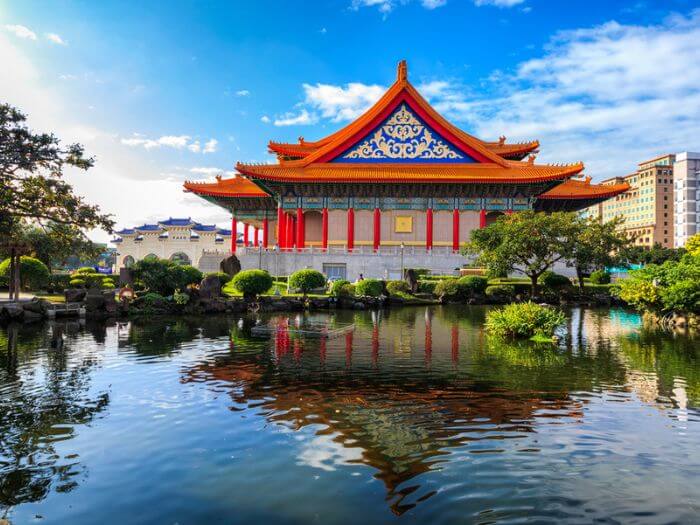
Differences in Chinese grammar also exist, again, mainly due to the influence of Hokkien grammar on spoken Guoyu.
Just one example of this is the 有没有 yŏu méi yŏu construction used to ask if someone has done something yet.
The sentence 他有没有写作业?tā yŏu méi yŏu xiĕ zuòyè? can be used to ask “has he done his homework yet?” and is considered correct in both Putonghua and Guoyu.
However, in Guoyu, this can also be expressed as 他有寫作業沒有? tā yŏu xiĕ zuòyè méi yŏu?
This version is not possible in Putonghua and would seem very strange to a mainlander, but it is common in Hokkien, which accounts for its adoption into Guoyu.
That said, speakers of Putonghua and Guoyu will usually be able to understand each other’s grammar just as easily as English speakers can understand the difference between the British past participle “got” compared to the American “gotten”.
Pronunciation
Some minor differences in pronunciation also exist between Putonghua and Guoyu.
For example, the zh-, ch– and sh- sounds of Putonghua are commonly pronounced as z-, c- and s- in Taiwan, which is similar to the way many people from the south of China pronounce these sounds when speaking Putonghua.
Guoyu has the same four tones as Putonghua, but there are some differences, which can be summarised by saying that Taiwanese tones tend to be flatter and less marked.
Certain vowels are also pronounced differently – for example Putonghua 风 fēng (wind) may sound more like fōng (a sound that doesn’t exist in Standard Chinese).
However, despite these differences, if you speak one version of the language, you shouldn’t have too much trouble understanding the other. Although if you learn your Chinese in Taiwan, a mainlander will probably be able to pick out your accent.
Writing In Taiwan
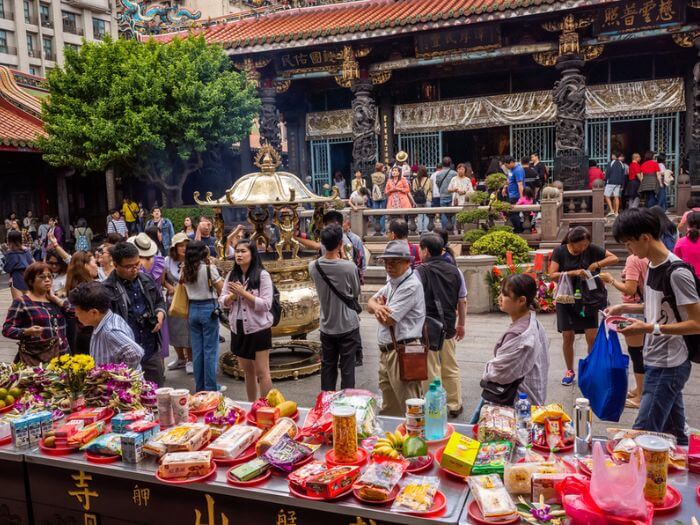
We can’t talk about the languages of Taiwan without mentioning the writing – and specifically, traditional Chinese characters.
Before the Communists came to power in China, Chinese was written using the same characters everywhere.
However, after the separation of the PRC and ROC, on the mainland, a project was undertaken to simplify around 2,000 of the most common characters.
These simplified characters have now become the international standard. But in Taiwan (as well as in Hong Kong and Macau), people continue to use traditional characters to this day.
In Taiwan, several systems of Romanisation are in use. Pinyin, the official system used on the mainland is now gaining ground. But one based on the older Wade-Giles system is still common, especially for the names of people and places.
This is why the capital of Taiwan (台北) is written Taipei – rather than Taibei, as it would be in pinyin. It’s also why the current president’s name (蔡英文) is written as Tsai Ing-wen – in pinyin, it would be Cai Yingwen.
The Zhuyin Phonetic System
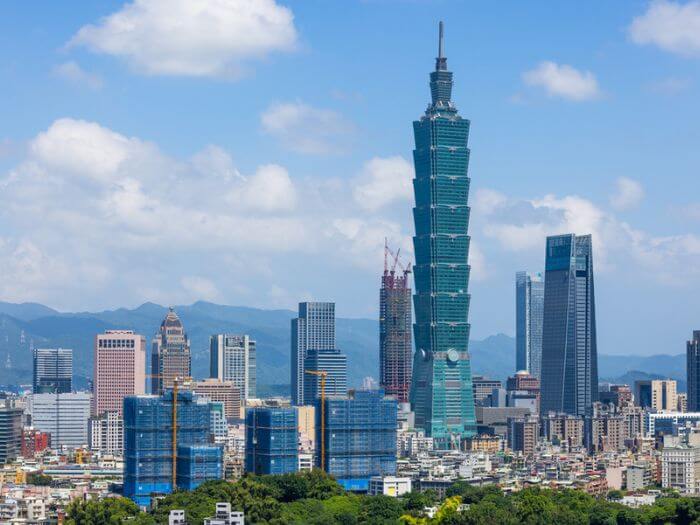
In Taiwan, a writing system known as Zhuyin (or Bopomofo) not based on Roman letters is used to help children learn to read and write characters. And it can also be used as an input method on computers and smartphones.
Zhuyin can also sometimes be found in newspapers next to uncommon characters that people might not know.
Developed at the start of the 20th century in Mainland China under the ROC, it consists of a set of 37 phonetic symbols plus tone marks that look superficially like Japanese Katakana.
Zhuyin can be used to write the sounds of Mandarin Chinese as well as other Chinese languages like Hokkien and Hakka phonetically and is still a popular input method in Taiwan today. Although it's now less common than pinyin input methods.
Aboriginal Formosan languages, on the other hand, are written using the Roman alphabet.
What Language Is Spoken In Taiwan? FAQ
What language is spoken in Taiwan?
Although a variety of languages are spoken in Taiwan, by far the two most prevalent are Taiwanese Mandarin and Taiwanese Hokkien.
These two languages are both descended from an ancient language known as Old Chinese, but they began to diverge from around the 7th century CE. Now they are completely mutually unintelligible – much more so than something like French and Italian, for example.
A third Chinese language, Hakka – also mutually unintelligible with either Mandarin or Hokkien – is also spoken on the island, and several indigenous languages belonging to the Austronesian language family are also spoken by dwindling pockets of aboriginal Taiwanese.
Are Chinese and Taiwanese the same language?
In Taiwan, Mandarin Chinese is the official language and is very similar to the Mandarin spoken in mainland China, though there are some vocabulary and accent differences.
Taiwanese Hokkien is also widely spoken and differs significantly from Mandarin.
In general, “Chinese” is a broad term that encompasses many dialects, while “Taiwanese” typically refers to either Mandarin as spoken in Taiwan or specifically to Taiwanese Hokkien.
How do you say hello in Taiwan?
To say “hello” in Taiwan, you can use Nǐ hǎo (你好) in Mandarin, which is the same greeting used in mainland China. In Taiwanese Hokkien, “hello” is often Li-hó (你好).
Do they speak Japanese in Taiwan?
Although Taiwan was a Japanese possession for around 50 years, and the Japanese language was promoted to the detriment of all others during that period, nowadays, only a few Japanese speakers are left.
That said, Japanese culture is fashionable among Taiwanese youth, and Japanese is a popular language to study.
What Language Is Spoken In Taiwan? A Fascinating Patchwork
As you’ve seen, Taiwan is home to a fascinating patchwork of languages. But the reality is that most of them are under threat due to the dominance of Hokkien and, especially, Mandarin.
Hokkien has traditionally been the most common native language. But the modern reality is that almost everyone there speaks Mandarin, either as a native language, as a co-native language or as a second language.
This means if you speak Mandarin too, it will get you a long way in Taiwan while also delighting the locals.
And if you have the opportunity to travel there, you shouldn’t hesitate because Taiwan is a vibrant, varied, welcoming, beautiful and unique place to visit.

Olly Richards
Creator of the StoryLearning® Method
Olly Richards is a renowned polyglot and language learning expert with over 15 years of experience teaching millions through his innovative StoryLearning® method. He is the creator of StoryLearning, one of the world's largest language learning blogs with 500,000+ monthly readers.
Olly has authored 30+ language learning books and courses, including the bestselling "Short Stories" series published by Teach Yourself.
When not developing new teaching methods, Richards practices what he preaches—he speaks 8 languages fluently and continues learning new ones through his own methodology.
